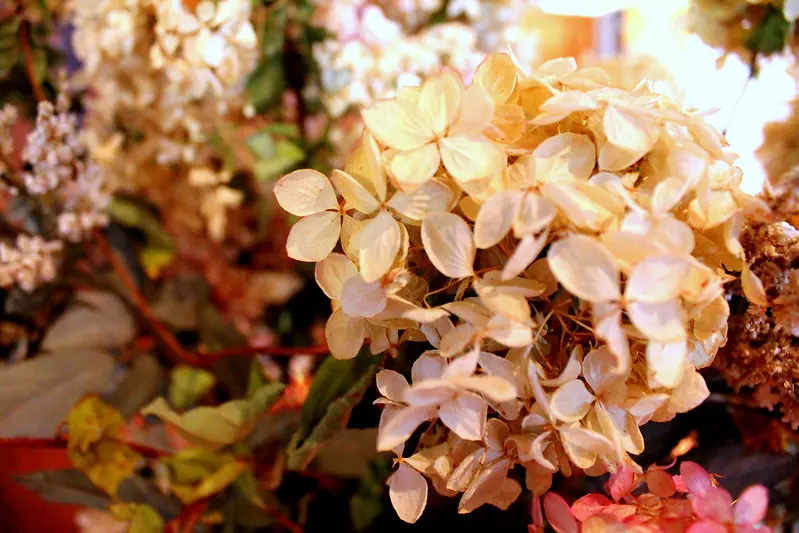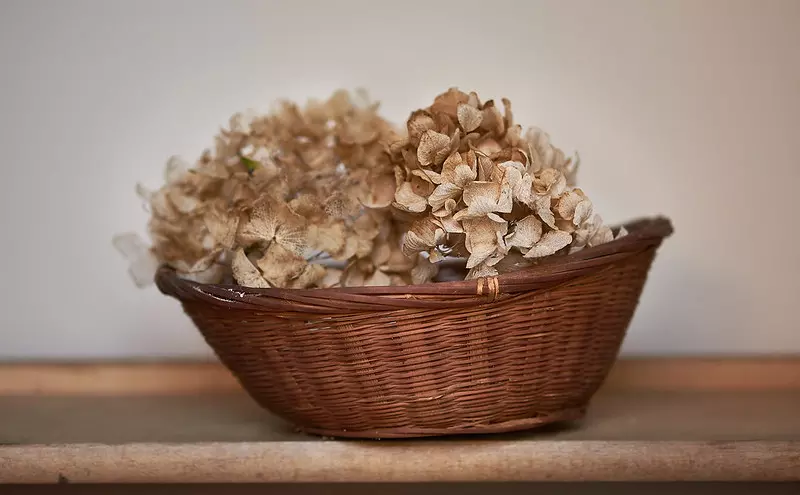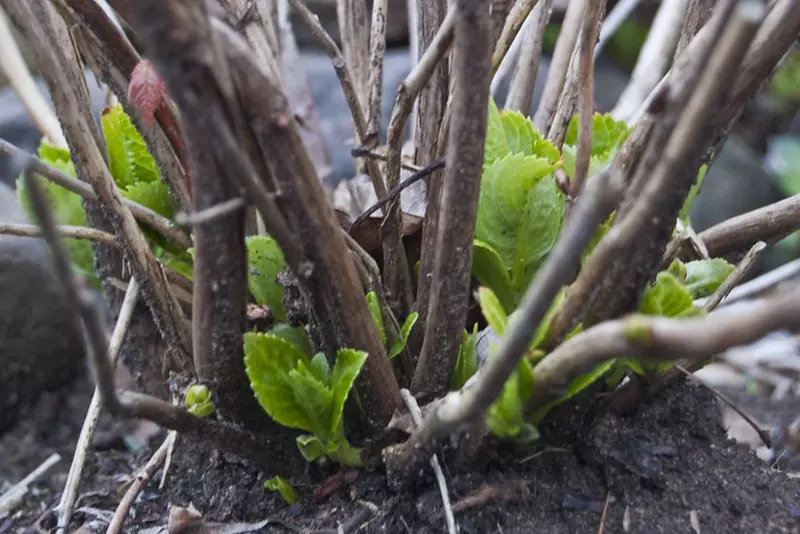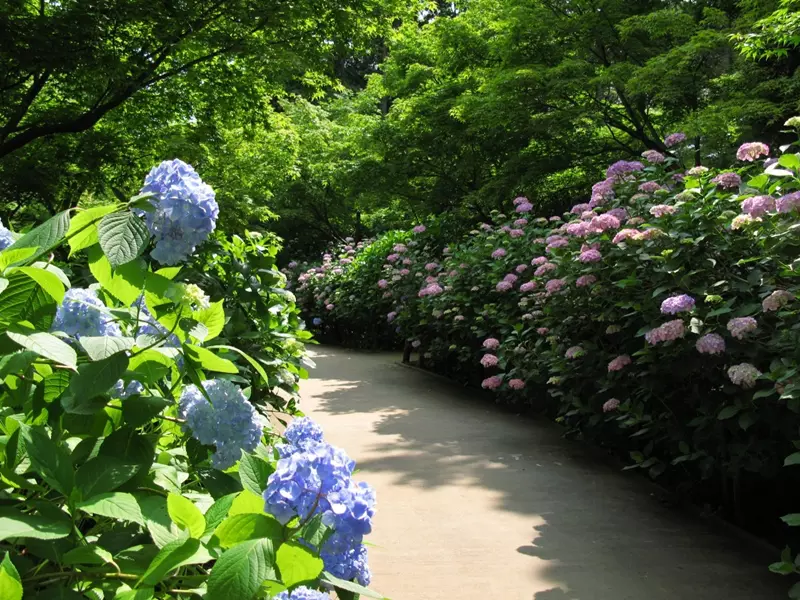
How to Create a Hydrangea Bouquet: Step-by-Step Guide
Learn step-by-step how to create a stunning hydrangea bouquet with this comprehensive guide. Perfect for weddings, home decor, or gifting.
Read MoreHydrangeas are cherished for their lush, vibrant blooms that can enhance any garden or interior space. Drying hydrangea heads allows you to preserve their beauty, creating long-lasting floral arrangements. This guide explores several effective methods to dry hydrangea heads, ensuring they retain their colour and form.

Hydrangeas are renowned for their lush, vibrant blooms that can enhance any garden or interior space. Drying these flowers allows you to preserve their beauty year-round. However, the key to successful drying lies in harvesting the blooms at the optimal time.
Hydrangea blooms go through several stages:
For drying purposes, it's best to harvest hydrangea blooms during the mature stage. At this point, the petals have a papery texture, and the colours may have mellowed. Harvesting too early, when the blooms are still fresh and moist, can lead to wilting during the drying process.
Typically, this stage occurs in late summer to early autumn, depending on your local climate and the specific hydrangea variety.
To determine if your hydrangea blooms are ready for drying, look for the following indicators:


Timing is crucial when harvesting hydrangea blooms for drying. By waiting until the flowers reach the mature stage, you can ensure they retain their beauty and structure throughout the drying process. Observing the signs of readiness and following proper harvesting techniques will help you preserve these stunning blooms for long-lasting enjoyment.
Hydrangeas are cherished for their lush, vibrant blooms that can enhance any home décor. Air drying is a simple and effective method to preserve these flowers, allowing you to enjoy their beauty for years. This guide provides a detailed, step-by-step approach to air drying hydrangea flowers, ensuring they remain a stunning addition to your interior spaces.
The timing of your harvest is crucial for successful drying. It's best to cut hydrangea blooms when they are mature, typically in late summer to early autumn. At this stage, the petals have a slightly papery feel, and the colours may have started to fade. Harvesting too early, when the blooms are still fresh and moist, can lead to wilting during the drying process.
Using sharp pruning shears, cut the hydrangea stems to your desired length, ideally between 12 to 18 inches. Remove all leaves from the stems, as they can retain moisture and hinder the drying process.
Gather the stems into small bundles, securing them with string or rubber bands. Ensure the bundles are not too large to allow adequate air circulation around each bloom.
Hang the bundles upside down in a well-ventilated, dry area away from direct sunlight. A dark, cool room is ideal, as exposure to sunlight can cause the colours to fade. Hanging the flowers upside down helps maintain their shape and prevents the stems from bending.
Allow the hydrangeas to hang undisturbed for approximately two to three weeks. The drying time can vary depending on the humidity levels and the size of the blooms. The flowers are thoroughly dried when the petals feel papery and the stems are stiff.
After hanging the hydrangeas for 2-3 days, you can transfer them to an empty vase without water. Place the vase in a warm, dry location. This method allows the flowers to continue drying while maintaining straight stems, making them suitable for upright arrangements.
Once fully dried, handle the hydrangea blooms gently to avoid damage. To further preserve their appearance and reduce shedding, consider applying a light coat of hairspray. Hold the hairspray can about 12 inches away from the blooms and spray evenly. Allow the hairspray to dry completely before arranging the flowers.
Air drying hydrangea flowers is a straightforward and rewarding process that allows you to enjoy their beauty long after the growing season has ended. By following these steps, you can create stunning, long-lasting arrangements that add a touch of elegance to your home décor.
Hydrangeas are renowned for their lush, vibrant blooms that can enhance any home décor. Preserving these flowers through drying allows you to enjoy their beauty year-round. The water drying method is a simple and effective technique to maintain the colour and structure of hydrangea blooms.

The timing of your harvest is crucial for successful drying. It's best to cut hydrangea blooms when they are mature, typically in late summer to early autumn. At this stage, the petals have a slightly papery feel, and the colours may have started to fade. Harvesting too early, when the blooms are still fresh and moist, can lead to wilting during the drying process.
Using sharp pruning shears, cut the hydrangea stems to your desired length, ideally between 12 to 18 inches. Remove all leaves from the stems, as they can retain moisture and hinder the drying process.
Fill a clean vase with about 2 to 3 inches of room temperature water. This amount is sufficient to allow the flowers to absorb moisture without becoming waterlogged.
Place the prepared hydrangea stems into the vase, ensuring that the cut ends are submerged in the water. Arrange the stems so that the blooms have ample space and are not overcrowded.
Position the vase in a cool, dry area away from direct sunlight. As the water evaporates over time, the hydrangea blooms will gradually dry out. This slow drying process helps to preserve the colour and shape of the flowers.
Over the course of one to two weeks, monitor the water level in the vase. Allow the water to evaporate completely; do not add more water. Once the water has evaporated and the blooms feel dry and papery to the touch, the drying process is complete.
Once fully dried, handle the hydrangea blooms gently to avoid damage. To further preserve their appearance and reduce shedding, consider applying a light coat of hairspray. Hold the hairspray can about 12 inches away from the blooms and spray evenly. Allow the hairspray to dry completely before arranging the flowers.
The water drying method is a straightforward and effective way to preserve hydrangea flowers, allowing you to enjoy their beauty long after the growing season has ended. By following these steps, you can create stunning, long-lasting arrangements that add a touch of elegance to your home décor.
Hydrangeas are cherished for their lush, vibrant blooms that can enhance any home décor. Preserving these flowers through drying allows you to enjoy their beauty year-round. The silica gel drying method is an effective technique to maintain the colour and structure of hydrangea blooms.
The timing of your harvest is crucial for successful drying. It's best to cut hydrangea blooms when they are mature, typically in late summer to early autumn. At this stage, the petals have a slightly papery feel, and the colours may have started to fade. Harvesting too early, when the blooms are still fresh and moist, can lead to wilting during the drying process.
Using sharp pruning shears, cut the hydrangea stems to your desired length, ideally between 12 to 18 inches. Remove all leaves from the stems, as they can retain moisture and hinder the drying process.
Select an airtight container large enough to accommodate the hydrangea blooms without crowding. Pour a layer of silica gel crystals into the bottom of the container, about 1 to 2 inches deep.
Place the hydrangea blooms upright into the silica gel layer, ensuring they do not touch each other or the sides of the container. Gently pour additional silica gel over the blooms, making sure to cover them completely without crushing the petals.
Once the blooms are fully covered with silica gel, seal the container tightly to prevent moisture from entering. Label the container with the date to track the drying time.
Allow the hydrangeas to sit undisturbed in the silica gel for approximately one to two weeks. The drying time can vary depending on the size and moisture content of the blooms. The flowers are thoroughly dried when the petals feel papery and the stems are stiff.
Carefully remove the hydrangea blooms from the silica gel, gently brushing off any remaining crystals with a soft brush. Handle the flowers delicately to avoid damaging the petals.
Once fully dried, handle the hydrangea blooms gently to avoid damage. To further preserve their appearance and reduce shedding, consider applying a light coat of hairspray. Hold the hairspray can about 12 inches away from the blooms and spray evenly. Allow the hairspray to dry completely before arranging the flowers.
The silica gel drying method is a reliable way to preserve hydrangea flowers, allowing you to enjoy their beauty long after the growing season has ended. By following these steps, you can create stunning, long-lasting arrangements that add a touch of elegance to your home décor.
Hydrangeas are cherished for their lush, vibrant blooms that can enhance any home décor. Preserving these flowers through drying allows you to enjoy their beauty year-round. Applying hairspray to dried hydrangeas is an effective method to maintain their appearance and prevent shedding.
Ensure that your hydrangea blooms are thoroughly dried before applying hairspray. Properly dried flowers will have a papery texture and retain their shape. If the blooms are not completely dry, the application of hairspray may trap moisture, leading to mould growth.
Choose a well-ventilated area to apply the hairspray, such as an open room or outdoor space. Cover your work surface with newspaper or a drop cloth to protect it from overspray.
Hold the aerosol hairspray can approximately 12 inches away from the hydrangea bloom. Spray a light, even coat over the entire flower, ensuring all petals are covered. Avoid over-saturating the bloom, as excessive hairspray can cause the petals to become stiff and brittle.
Allow the sprayed hydrangea to dry completely in a well-ventilated area. This process typically takes about 30 minutes. Ensure the bloom is fully dry before handling to prevent smudging or damage.
For added protection, consider applying a second light coat of hairspray after the first layer has dried. This additional layer can help further reduce shedding and maintain the bloom's appearance over time.
Once the hairspray has dried completely, your preserved hydrangea blooms are ready for display. Arrange them in vases, wreaths, or other decorative pieces to enhance your home décor. To prolong their lifespan, keep the preserved flowers away from direct sunlight and high humidity areas.
Using hairspray to preserve dried hydrangeas is a simple and effective method to maintain their beauty and prevent shedding. By following these steps, you can enjoy the elegance of hydrangea blooms in your home décor for an extended period.

Learn step-by-step how to create a stunning hydrangea bouquet with this comprehensive guide. Perfect for weddings, home decor, or gifting.
Read More
Learn when and how to prune your hydrangeas this spring with our detailed guide. Includes tips for tool preparation and proper pruning techniques.
Read More
Explore the best hydrangea varieties for urban gardens in the UK, including their unique features and benefits for city environments.
Read More